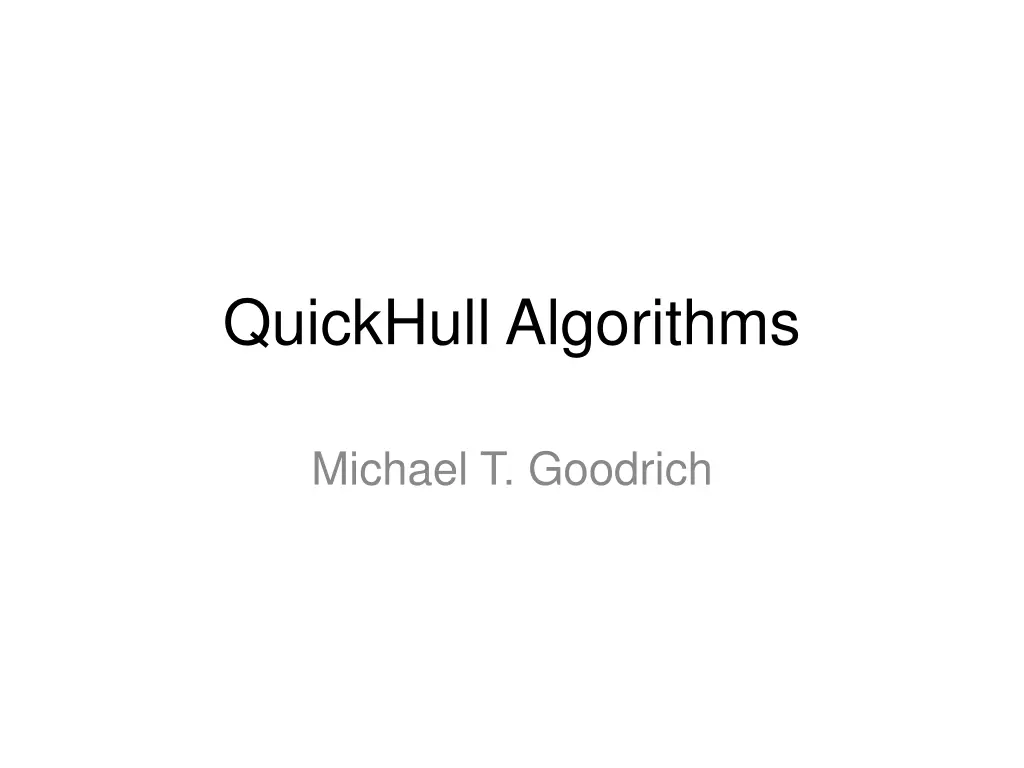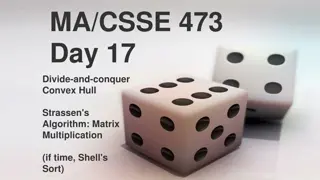
QuickHull Algorithms & Analysis
"Learn about the QuickHull algorithms for finding convex hulls, along with analysis on running time and randomizing techniques. Explore the concepts of ray shooting and their analysis. Images and diagrams provide visual aid to understand the process."
Download Presentation

Please find below an Image/Link to download the presentation.
The content on the website is provided AS IS for your information and personal use only. It may not be sold, licensed, or shared on other websites without obtaining consent from the author. If you encounter any issues during the download, it is possible that the publisher has removed the file from their server.
You are allowed to download the files provided on this website for personal or commercial use, subject to the condition that they are used lawfully. All files are the property of their respective owners.
The content on the website is provided AS IS for your information and personal use only. It may not be sold, licensed, or shared on other websites without obtaining consent from the author.
E N D
Presentation Transcript
QuickHull Algorithms Michael T. Goodrich
QuickHull Find a point, p S, with minimum x-coordinate, and a point, r S, with maximum x-coordinate. Clearly, p and r are on the convex hull of S. For each recursive call, we have a set of points, S S, inside a triangle with base pr, for which Quickhull determines the point, q in S , that is farthest from the segment pr. Then we prune away points inside the triangle (p, q, r) Partition the remaining points of S into those above pq and qr and in bounding triangles defined by the tangents,respectively, and we recursively solve the problem for each of these subsets if they are nonempty. recursive calls in these triangles r q p r prune away points inside this triangle p
QuickHull Analysis Hopefully, we split evenly in each recursive call, which would lead to a running time of O(n log n), but this is not guaranteed. Worst-case running time: O(nh). Example: (x,x2) for x=2i, i=1,2,3, recursive calls in these triangles r q p r prune away points inside this triangle p
Randomized QuickHull Find a point, p S, with minimum x-coordinate, and a point, r S, with maximum x-coordinate. Clearly, p and r are on the convex hull of S. For each recursive call, choose a point, q, uniformly at random. Shoot a ray perpendicular to pr and find the bridge edge, (s,t), intersected by this ray. Partition the remaining points of S into those above ps and qt and in bounding triangles and we recursively solve the problem for each of these subsets if they are nonempty. recursive calls in these triangles r t R s p q r prune away points inside this region p
Ray Shooting Randomized R R pi pi t t s q q p p r r
Ray Shooting Analysis R R pi pi t t s q q p p r r

